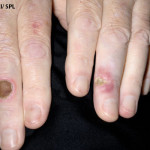 • Cervical screening programmes often stop at around the age of 65 and focus on younger women. In their analysis article, Susan Sherman and colleagues argue that, with an ageing population, the upper age limit for cervical screening needs to reflect this. They also call for awareness campaigns to target older as well as younger women.
• Cervical screening programmes often stop at around the age of 65 and focus on younger women. In their analysis article, Susan Sherman and colleagues argue that, with an ageing population, the upper age limit for cervical screening needs to reflect this. They also call for awareness campaigns to target older as well as younger women.
• The validity of the Quality and Outcomes Framework—a pay for performance programme to improve care in UK general practice that constitutes roughly 13% of practice income—is questioned by Martin McShane and Edward Mitchell. In their analysis article, they suggest how it should change in the future.
 • In research, a randomised controlled trial involving 112 patients by Anthony D Ormerod and colleagues compares the two most commonly used treatments for the rare and severe skin disease pyoderma gangrenosum—prednisolone and ciclosporin. In an accompanying editorial, Jan Robert Mekkes, dermatologist at the University of Amsterdam, explains how the results for the trial showed both to be of “comparable effectiveness,” and goes on to say “we now have documented evidence on the efficacy of these two standard treatments for pyoderma gangrenosum. This paves the way for future trials: new treatments can be compared head to head with prednisolone or ciclosporin.”
• In research, a randomised controlled trial involving 112 patients by Anthony D Ormerod and colleagues compares the two most commonly used treatments for the rare and severe skin disease pyoderma gangrenosum—prednisolone and ciclosporin. In an accompanying editorial, Jan Robert Mekkes, dermatologist at the University of Amsterdam, explains how the results for the trial showed both to be of “comparable effectiveness,” and goes on to say “we now have documented evidence on the efficacy of these two standard treatments for pyoderma gangrenosum. This paves the way for future trials: new treatments can be compared head to head with prednisolone or ciclosporin.”
 • In her news story, Caroline White reports on Westminster Health Forum’s keynote seminar on improving care for older people in London where one speaker said, “There has been a very steep decrease in the absolute numbers of people receiving services over the past five years.” He also said, “When you control for the demographic effect, where more people are in need of social care, year on year, that decrease is close to 40%.”
• In her news story, Caroline White reports on Westminster Health Forum’s keynote seminar on improving care for older people in London where one speaker said, “There has been a very steep decrease in the absolute numbers of people receiving services over the past five years.” He also said, “When you control for the demographic effect, where more people are in need of social care, year on year, that decrease is close to 40%.”
• Jeffrey Aronson’s blog on logos, including those of medical institutions, certainly made me look at some symbols differently. As he explains, “the dictionary definition doesn’t really do justice to the complete range of uses of logos.”
Sally Carter is a technical editor, The BMJ.
